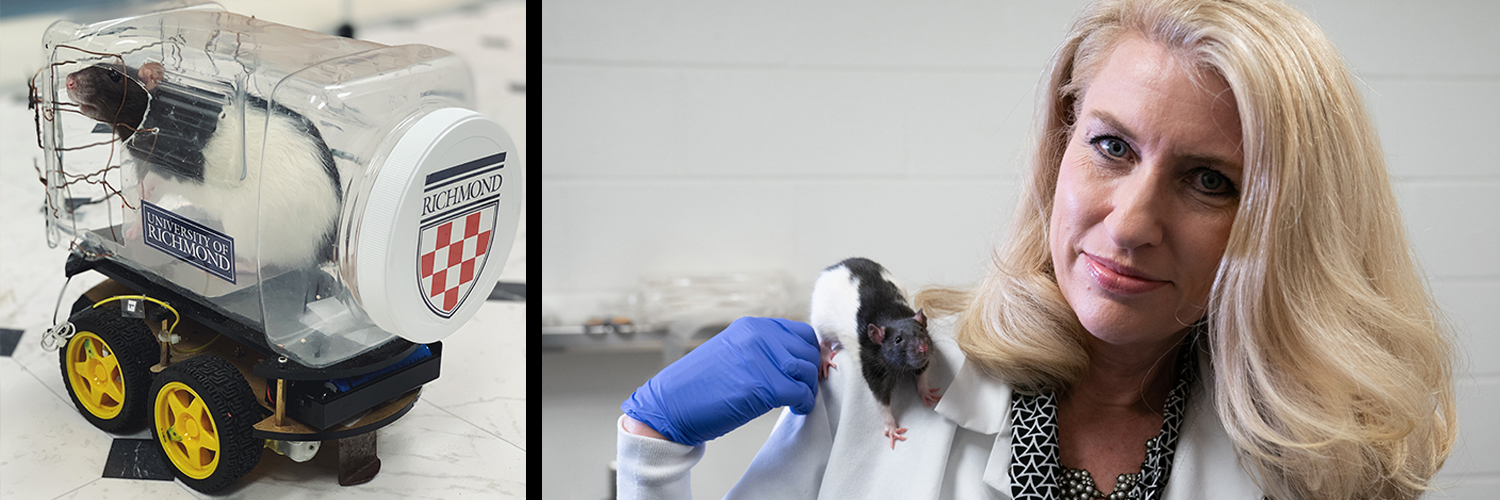
Research Highlight: Teaching Rats to Drive


Note: Check out the latest rat car in this video reveal: Introducing the Rat Car II
Driving On: Latest on Driving Rats Research Project
In 2019, a team of psychology researchers at the University of Richmond, published their research about teaching rats to drive, which caught the attention of more than 1,500 news outlets in 40 countries. The results of this important research may inform future strategies for mental health treatments. The work has continued. With new cars and new components added to the equation, Kelly Lambert, a professor of behavioral neuroscience who is leading the research team, explains the latest developments in this innovative research.
Lambert and her colleagues first published this research in the Behavioural Brain Research journal article "Enriched Environment Exposure Accelerates Rodent Driving Skills."
“This research study found that rats housed in a complex, enriched environment (i.e., environment with interesting objects to interact with) learned the driving task, but rats housed in standard laboratory cages had problems learning the task (i.e., they failed their driving test). That means the complex environment led to more behavioral flexibility and neuroplasticity,” Lambert said.
Among other outcomes, this research related to complex tasks may inform us about conditions such as anxiety and depression.
In terms of the latest on this research project, Lambert added:
"Our lab is interested in something we refer to as experience-based neuroplasticity, so we're interested in how our environment and our interactions with the world sculpt our brain, our neural networks. This research could have some therapeutic value as we learn more and help us understand mental illness and mental health, and our collaborators are the rodents. We have a rat lab here at the University of Richmond, and rat brains have all the same areas that our brains have and neurochemicals, so it's a good starting point, a model, to use to learn more about the human brain. We love to study these animals, and we're always amazed at what they can do in the lab with their behavior, their cognitive flexibility, and their emotional resilience. The rodent behavior and their brains help us learn more about human behavior and brains.
When we published the original driving rat manuscript, part of that was looking at the effects of different environments on the animal's ability to drive. We've also been interested in enriched environments, meaning more engaging and dynamic than the standard rat laboratory cages. In an enriched or an engaged environment, the space is larger. There are more animals in there to interact with. They can exercise; we introduce new stimuli. Some of them are more natural stimuli as well. So we think it's closer to a natural environment for the rat. So it's no real surprise that the rats living in these enriched environments train more efficiently and are more motivated to drive the cars.
Training is a big part of their life, and we know even with humans that training can change the brain in really interesting ways. Just learning to juggle can increase the density or the area of certain areas of our brain's cortex.
There's been a lot of interest in this. It's just fun to see a rat driving a car, but in the context of sharing that with someone or an audience or writing about it, I have an opportunity to talk about the impact of enriched environments, to talk about individual differences, to talk about sex differences, and learning the impact of training healthy brains throughout the lifespan. So it's become a great springboard to talk about some of our laboratory research."




